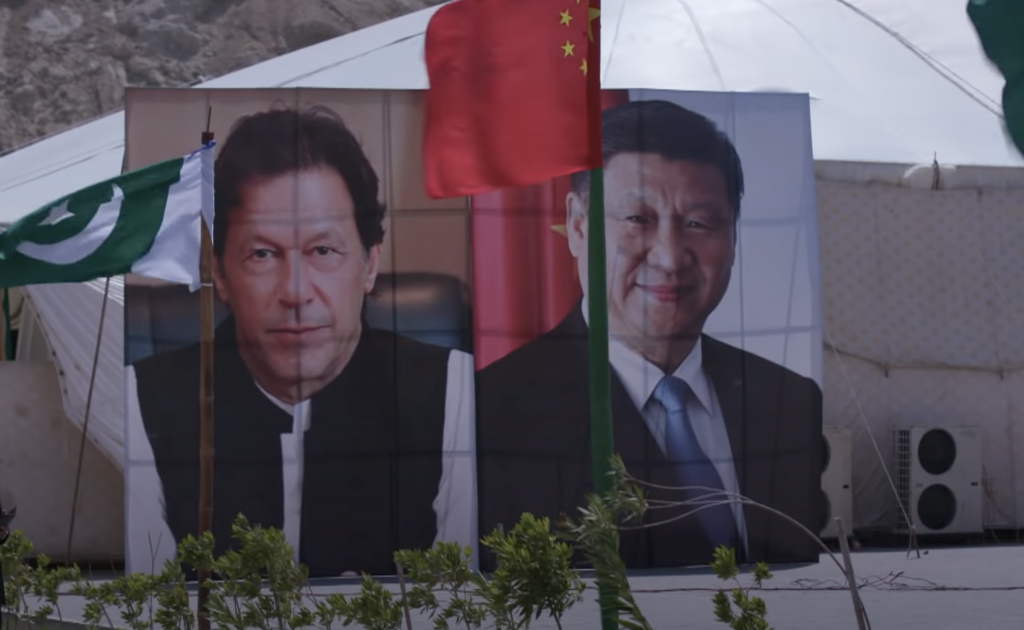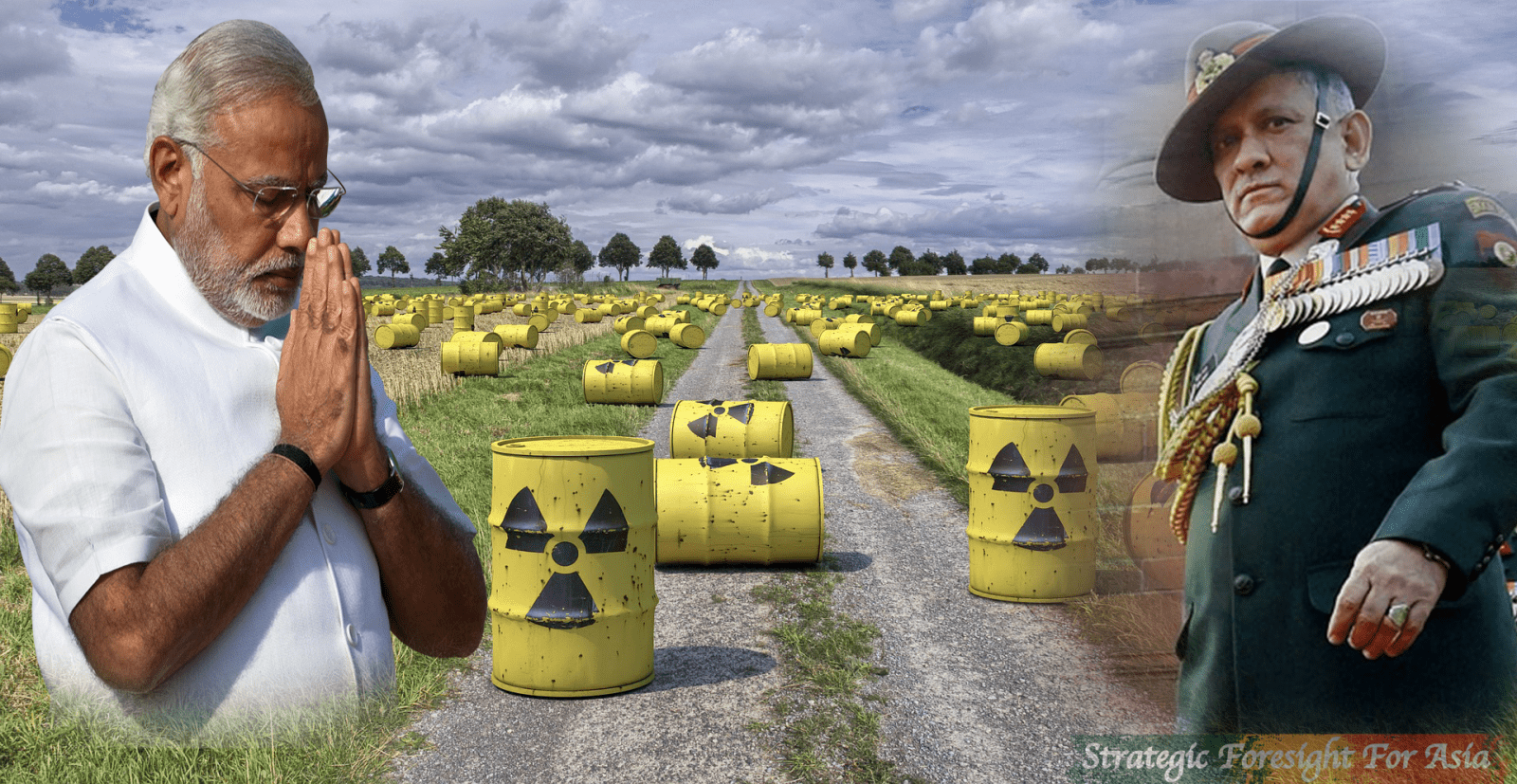
India plays a fundamental role in shaping the regional dynamics of South Asia. The estranged relationship between India and Pakistan since their independence has made the region a volatile place. Furthermore, China’s animosity against India has exacerbated the situation. Though China’s animosity against India has remained beneficial for Pakistan, yet the region remains under constant threat of skirmishes and security contours. China’s inevitable involvement in the region makes the involvement of the United States compulsory to counterweight the former’s hegemonic proclivities. Competition to have a hegemonic status in the region has invited the interests of the great powers in the region turn the South Asia into a chess board wherein the great powers are fighting to have sway over the region.
Indian factor in the region has made irreversible ties between Pakistan and China. China and Pakistan relations have started with the inception of China. These relationships strengthened in 1962 when India and China fought a war over border issues. Both Pakistan and China share mutual relationship ranging from military cooperation; economic cooperation to building nuclear weapons and energy corridor. Pakistan procures weapons from China so that Pakistan can counter Indian rising threat. Both elicit benefits because both have a common adversary.
Complex Interdependence is visible among the countries. Despite all countries rhetorically emphasize on cooperation for betterment of the region, reality does not reflect their words. There is a vivid gap between their words and actions. India and China entertain economic relationship, but their strategic interests differ. China wants to subdue India and vice versa. The recent stand-off between India and China over Galwan valley stands a clear testimony to this very fact. Meanwhile, the United States is another stake holder in the region. The United States and Pakistan have remained estranged partners. However, both countries are no more amicable in their political and geo-strategic interests. The recent development in Afghanistan has made Pakistan once again an unavoidable player in the ongoing peace process. Therefore, the USA cannot ignore the presence of Pakistan in Afghanistan and the interdependence between both countries.
The matter of Indian hegemonic tendencies is an existential threat to Pakistan. Since its independence, India wants to undo Pakistan. It wants to assume the role of regional policeman. Rising India, undoubtedly, does not serve the interest of Pakistan. Moreover, China is the biggest contender of the world hegemon. For that, China first needs to be invincible in the Asian region which the United States does not want. There is both susceptibility interdependence and vulnerability interdependence between China-India and India-Pakistan. Indian military modernization makes Pakistan and China vulnerable to the security challenges. China and Pakistan reciprocate Indian advancement in military by signing new agreements. Furthermore, Indian role in Afghanistan puts both Pakistan and China on tenterhooks and make both the countries to explore new ways to counter the emerging security threats. Thus, it would not be erroneous to call India a defining character, owing to its strategic interests, in bolstering China-Pakistan relations.
All the above geopolitics engender strategic environment of the South Asia. India has introduced a new controversial military strategy in the region. This strategy is called the Cold Start Doctrine. There is myriad of the elements which are responsible for the emerging strategic environment of the South Asia. The tussle between the key players of the South Asia landed both the countries in an unending race of acquiring weapons. This ultimately resulted into nuclearization of South Asia. Furthermore, cross-border terrorism has deteriorated the regional environment of South Asia. Indian involvement in Balochistan is an open secret. Moreover, sanctuaries in Afghanistan are used against Pakistan and the southern region of China to escalate the separatist sentiments. Indian rise has bolstered the relationship between Pakistan and China beyond any doubt. New economic initiatives have been taken by Pakistan and China. China Pakistan Economic Corridor, a flagship of OBOR, is a glaring example of committed relationship between China and Pakistan. It does not stop here. India and Iran also have fallen into an economic cooperation under the flag of Chahbahar port. It will help India, besides economic advantages, to reach Afghanistan and the CARs by by-passing Pakistan. This has also been check-mated by China through a long-awaited investment of $400 bn. in Iran to integrate the entire region under the Chinese influence. India needs to find its feet after the Chinese investment in the region.
All of this has security implications for South Asia. Unabated animosity among the states may result into arms race. Pakistan and China are vulnerable to Indian military and economic designs. Thus, both countries conclude some military and economic alliances to counter India. This deteriorates strategic stability of the region. The arms race among the countries makes the region vulnerable to the security threats and challenges. India takes the support of the United States to tackle China and China bolsters Pakistan to make both the countries involved in the imbroglio. The United States does not want China to rise at the global level. China does not want India to take the lead in the region. If India takes the lead that will be security threat to the existence of Pakistan. Stable Pakistan is not in favor of India. Thus, India while considering Afghanistan an Achilles Heel of Pakistan gets involved in Afghanistan. Thus, Pakistan is vulnerable to India from both sides. The interests in the region also invite the extra-regional powers to the region. This ensues a great power gamble in the region. Furthermore, as Afghanistan is also a center of the South Asian strategic environment, thus, peace in Afghanistan is the foremost priority of Pakistan. Every country which is the stakeholder in the region wants peace in Afghanistan on its own terms. This further deteriorates the situation in the region.
However, Pakistan at this crucial period of its history, when the country needs to transcend other rivals to be in the limelight of the prosperous nations, requires taking some steps. Pakistan is an important strategic partner for China. Pakistan needs to govern itself efficaciously within its boundaries. To have smooth relations with China requires a governed Pakistan. Good governance, human resource development, political reforms and capacity building are the major steps that need to be taken by Pakistan to elicit maximum benefits from the CPEC.
With regards to India, instead of blaming India, Pakistan needs a policy review. Both India and Kashmir are long-term challenges for Pakistan. Pakistan cannot choose either short-term or zero-sum solutions with regards to India. Hence a long-term policy is needed beyond myopic blame-game.
For Pakistan, Afghanistan is a foreign policy embarrassment. Pakistan up till now cannot develop amicable relations with Afghanistan. Both countries have never tried to smooth their relationship beyond blaming each other for the upheavals in the countries. Alliance of the US, Afghanistan and India is not in favor of Pakistan. Pakistan’s standing with regards to Afghanistan always remains at its lowest ebb. Pakistan, come what may, must substantiate its relationship with Afghanistan for perennial peace across the borders.
Lastly, Pakistan’s relations with the US are also on the back burner due to the US blames against Pakistan. The Trump’s Afghanistan and the South Asia Policy targeted Pakistan and elevated India in the strategic calculus of the United States. The new administration seems no different from the previous stance. Pakistan needs to come out of strategic stand-off with the United States. Pakistan, further, needs to develop viable relationship with the United States. Rhetorical defence is more deception than reality. Out of the box policy is required to deal with the stakeholders in the region.




Be the first to comment